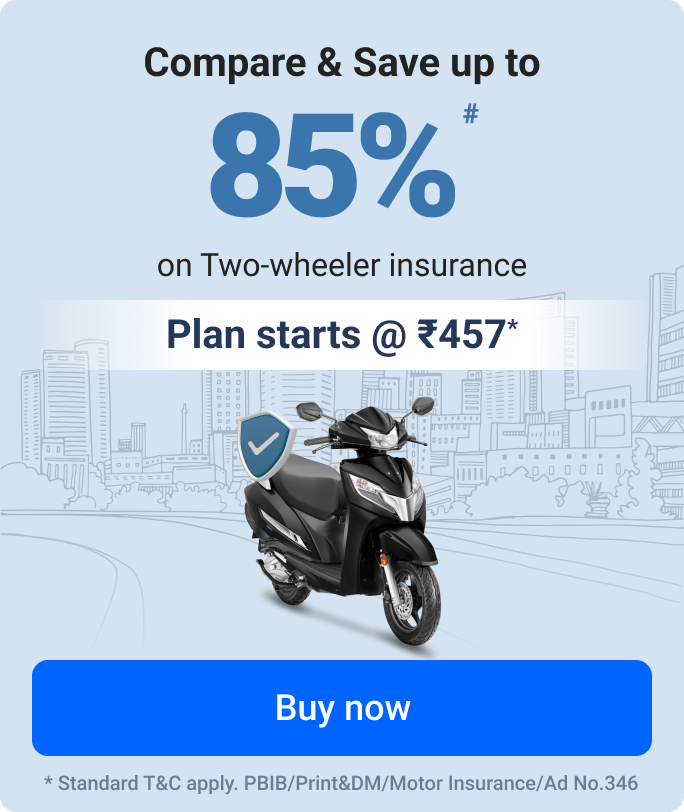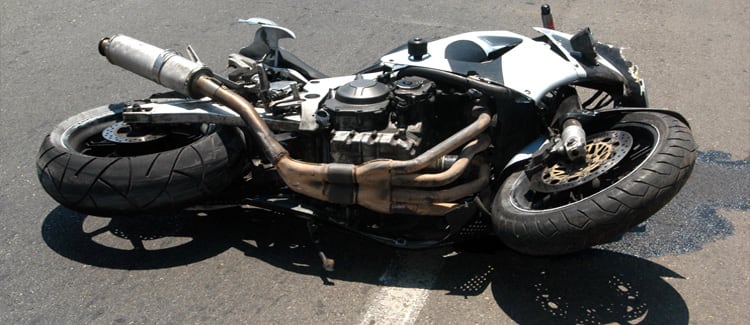What is IDV in Two Wheeler Insurance?
While buying insurance for your two-wheeler, you must have wondered what IDV is and how it effects your insurance premium. Insured Declared Value (IDV) is the maximum payout amount given by the insurer during the claim settlement and plays a crucial role when purchasing two-wheeler insurance. Read ahead to know to understand what IDV is in bike insurance.
Understanding IDV in Bike Insurance
An IDV is the maximum sum insured fixed by the insurance company, to compensate the policyholder, in case of theft of the insured vehicle or its total loss of the vehicle due to an accident. Generally, it is the current market value of a two-wheeler. If the two-wheeler's current market value is Rs 50,000 then the insurer will reimburse Rs 50,000 as a maximum amount.
How to Calculate IDV of Bike?
IDV calculator for bikes is a time-saving online calculator tool offered by different insurers. An IDV of the bike depends upon the listed selling price declared by the manufacturer. It is calculated at the beginning of the policy term or during policy renewal and then adjusted with depreciation.
With an IDV calculator, you can determine the market value and the right premium for your bike insurance. If you want to insure accessories that are not factory-fitted, the IDV is separately calculated by your insurer at an extra cost. Make sure you inform your bike insurer on time.
Additionally, the IDV calculator for the bike also determines the right claim payout amount when the cost of repairing damages is more than 75% of the sum insured (IDV) or stolen.
Calculating IDV for Bike Without Accessories
IDV = MRP of the bike - Depreciation Value
*MRP of the bike refers to the listed ex-showroom price by the manufacturer
*Depreciation as per the industry standard
Calculating IDV for Bike with Additional or Externally Fitted Accessories
IDV = (MRP of the bike - depreciation value of the bike) + (Price of the additionally fitted accessories - depreciation value of the additional accessories
Understanding the Rate of Depreciation on Bike
Depreciation is another term that is frequently used while calculating the premium amount. It is also a key player to decide the IDV and the premium payable. With time, the value of the vehicle decreases. As a result, the depreciation is adjusted while calculating your payout amount.
Here is a table showing the depreciation percentage as per the Indian Motor Tariff-
| Life of the Two-Wheeler | Depreciation % to Calculate IDV |
| Two-wheeler not more than six months old | 5% |
| Over six months old, but less than one year | 15% |
| Over one year old, but less than two years | 20% |
| Over two years old, but less than three years | 30% |
| Over three years old, but less than four years | 40% |
| Over four years old, but less than five years | 50% |
IDV for Two-Wheeler Aged Five Years and Above
The age of a two-wheeler is directly proportional to the rate of depreciation calculated - the higher the age of vehicle, the higher the rate of depreciation, i.e. older the two-wheeler, the lesser the value.
For a two-wheeler that is five years old or more, its depreciated value is computed based on its serviceable condition and the condition of the vehicle's body parts.
In the case of a two-wheeler older than five years or an obsolete model, the final IDV could be determined by a mutual agreement between the insurance company and the policyholder.
Some insurance companies follow the practice of getting surveyors to arrive at the correct IDV in insurance. This leads to an additional cost that the policyholder has to bear.
Factors Affecting the Insured Declared Value (IDV)
IDV in bike insurance is determined based on the following factors-
- The age of the bike to be insured
- Bike's registration date
- City of registration
- Fuel Type
- Make, model, and variant
- Bike insurance policy tenure
Significance of IDV in Bike Insurance
As discussed before, the IDV of a bike means the amount of compensation the policyholder receives in case of an unforeseen event. It is wise to get IDV closest to the bike's market value. This ensures that if an accident happens or the insured vehicle is stolen, the owner is compensated fairly enough, and they do not have to suffer a major loss.
Sometimes, general insurance companies may offer to bring down the IDV by about 5-10%. However, this percentage may be chosen by the customer. Hence, a lower IDV value means a lower rate of premium and vice-versa.
Consequences of Choosing the Wrong IDV
IDV of your bike directly impacts the premium of your bike insurance policy. If you are thinking to decrease the IDV, it will lead to the following consequences-
- This will reduce the sum insured, and the claim amount will be lower in case of a total loss of the vehicle.
- If the cost of repairing the accidental damage is higher, you will have to compensate for it from your pocket.
- Overall, you will suffer a huge loss due to the lower claim amount.
However, if you increase the IDV, you will have to bear the following consequences-
- This will increase your bike insurance premium.
- By doing so, you might not able to raise a claim for a total loss.
- Therefore, it is important to declare the right IDV of your bike. You can start this by researching thoroughly before buying a two-wheeler insurance policy. Start this by visiting a few websites that offer used or second-hand two-wheelers for sale to check the current market of those vehicles. By this, you will get an idea to set an approximate IDV of your bike.
Wrapping it Up!
IDV is one of the most crucial factors while calculating your two-wheeler insurance premium. To know the IDV, you can use a free online bike insurance premium calculator available at Policybazaar.com. Moreover, you can compare various bike insurance quotes offered by different insurers, as this helps you choose the right policy for your two-wheeler.
^The renewal of insurance policy is subject to our operations not being impacted by a system failure or force majeure event or for reasons beyond our control. Actual time for a transaction may vary subject to additional data requirements and operational processes.
^The buying of Insurance policy is subject to our operations not being impacted by a system failure or force majeure event or for reasons beyond our control. Actual time for transaction may vary subject to additional data requirements and operational processes.
#Savings are based on the comparison between highest and the lowest premium for own damage cover (excluding add-on covers) provided by different insurance companies for the same vehicle with the same IDV and same NCB.
*TP price for less than 75 CC two-wheelers. All savings are provided by insurers as per IRDAI-approved insurance plan. Standard T&C apply.
*Rs 538/- per annum is the price for third party motor insurance for two wheelers of not more than 75cc (non-commercial and non-electric)
#Savings are based on the comparison between the highest and the lowest premium for own damage cover (excluding add-on covers) provided by different insurance companies for the same vehicle with the same IDV and same NCB.
*₹ 1.5 is the Comprehensive premium for a 2015 TVS XL Super 70cc, MH02(Mumbai) RTO with an IDV of ₹5,895 and NCB at 50%.
*Rs 457/- per annum is the price for the third-party motor insurance for private electric two-wheelers of not more than 3KW (non-commercial).The list of insurers mentioned are arranged according to the alphabetical order of the names of insurers respectively.Policybazaar does not endorse, rate or recommend any particular insurer or insurance product offered by any insurer. The list of plans listed here comprise of insurance products offered by all the insurance partners of Policybazaar. For complete list of insurers in India refer to the Insurance Regulatory and Development Authority of India website www.irdai.gov.in




























